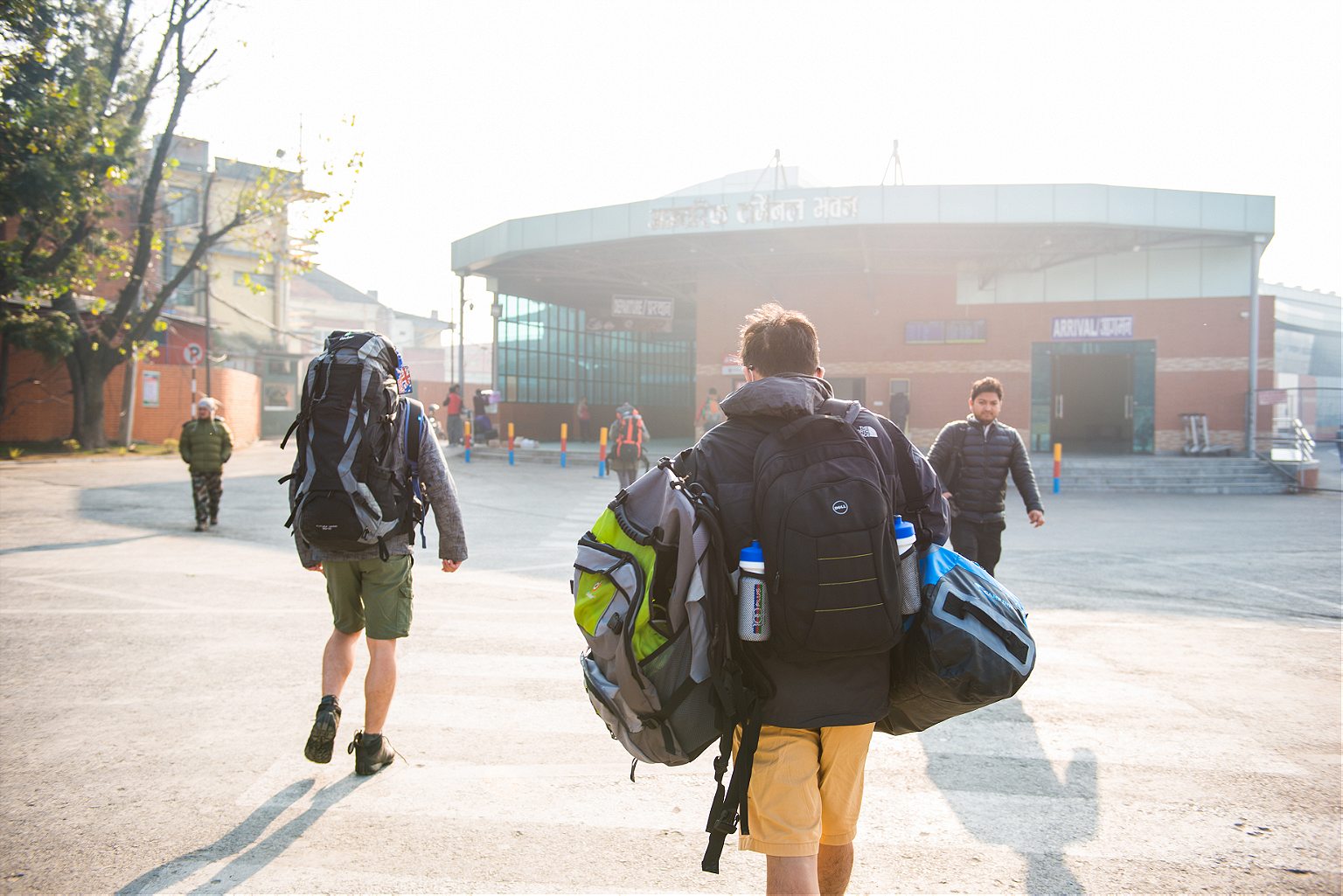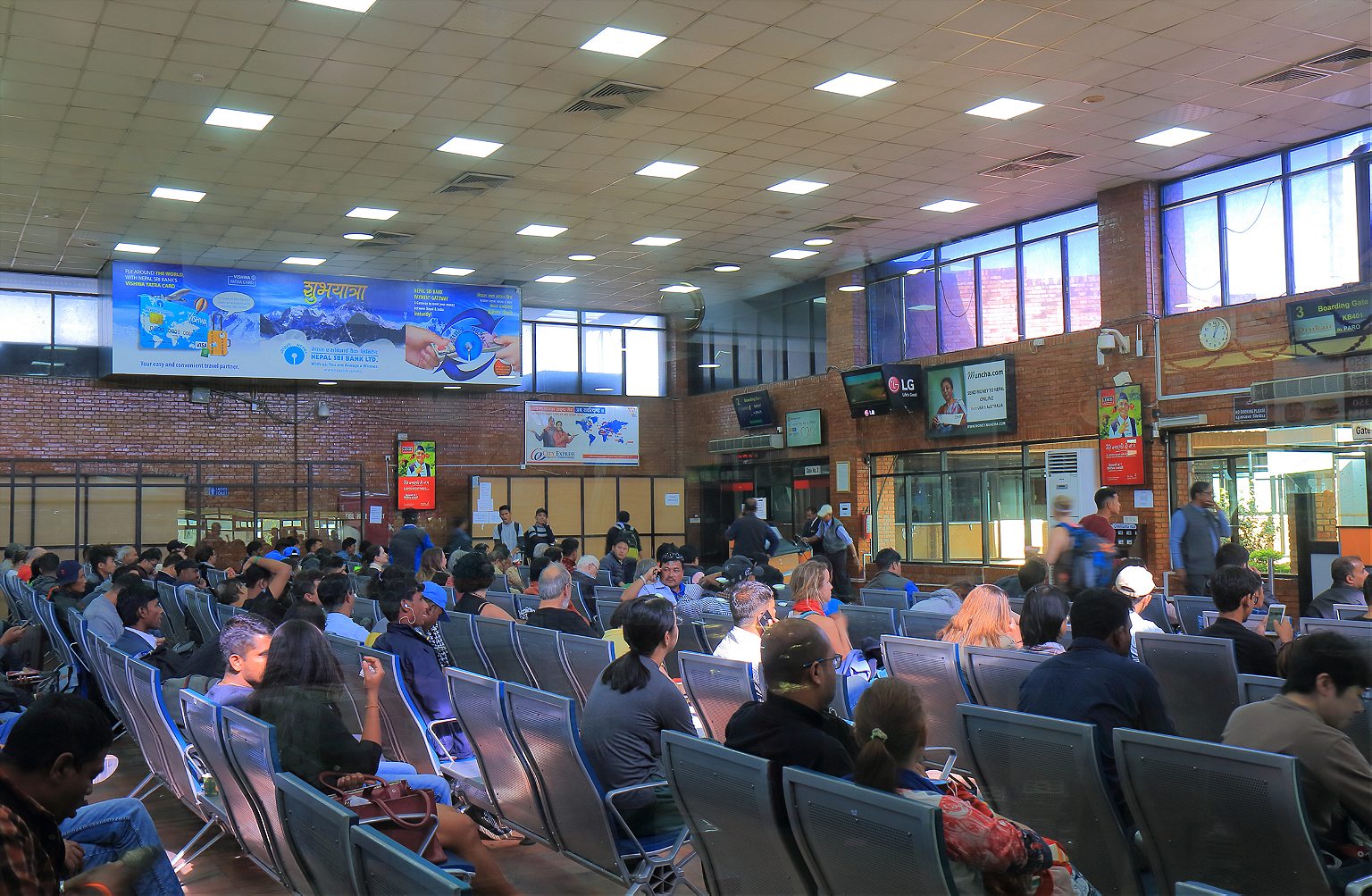Nepal’s only international airport ranks as one of the worst airports in the world. Here’s how you can avoid the frustration.
Being a pilot means many things. It means you get to travel a lot, meet travelers from a vast pool of professional fields, familiarize yourself with different cultures and cuisines—and most importantly, learn about life through exposure to different countries and people.
Being a pilot in Nepal means all of that and more. It means you get to fly in and out of one of the most challenging geographies in the world, and for someone flying into and out of Kathmandu, the adrenaline comes with an additional layer of responsibility. As of last month, I’ve been flying the country’s national flag carrier—first Royal Nepal Airlines, later renamed Nepal Airlines—for three decades, accumulating more than 20,000 hours on both domestic and international routes.
The Kathmandu Airport, also known as Tribhuvan International Airport, named after the late Shah king, once used to be a grazing ground for cattle. In 1957, the grass runway of the airfield was paved with concrete. Four years later, Queen Elizabeth II landed in a small Dakota plane for her first visit to Nepal, the most high-profile international arrival at the airport—and in the country. The airport has since gone through numerous facelifts—much like the country itself—but it remains, unfortunately, in a dilapidated state as it juggles daily domestic and international flights from a single runway. The airport is home to nearly a dozen private carriers that operate within the country, and a handful of international airlines that ferry people across Asia and the Middle East.
As unpopular as it is (Kathmandu airport regularly makes the list of the world’s worst airports), it is also the only way to fly in and out of this beautiful country. More than five million people used Tribhuvan Airport in 2016, nearly a million more than the previous year. The chaos at the airport hits you the moment you land, and it continues as you wait in frustration for your baggage, before you can figure out your way out of the airport. In recent years, the runways and the airspace have been so congested that flights have been asked to hold over Kathmandu for up to an hour. On some days, planes get rerouted to India and Bangladesh, before finally being allowed to land in Kathmandu. Kathmandu offers plenty of adventure and zen, but to get to those, you’ll have to first go through a few hours of agony.
[Read: Everything you should know before you go to Kathmandu]
Pick the right side
Kathmandu is a valley, which means it is surrounded by hills. High mountains, to be precise. If you’ve never flown into Kathmandu before, it’s an experience of a lifetime. When you’re flying in from the east, sit on the right side of the plane. If you’re flying from the West, you’ll want to sit on the left-hand side.
Depending on the time of day you’re flying, this gives you the best opportunity to view the great Himalayan ranges, including some of the highest mountains in the world. It is likely the air traffic control will ask the plane to stay put until the runway is clear, which will give you longer time to enjoy the majestic views—or just stare at the seat in front of you as they reroute you to one of the neighboring countries and make you wait.

As the flight starts to descend, it’d be hard to miss the masterful navigating above and around the mountains before it prepares for a final descent into the runway. That is also the moment you get to see Kathmandu from above in all its glorious mess before you finally land and step off the plane.
Arrival
Visas are available on arrival at the airport. Once you land, you enter the immigration hall, which has separate lines for foreigners and Nepalis. It’s helpful to fill out your landing cards and visa forms beforehand because the lines could get long here. There are also currency exchange booths before and after immigration counters. So far so good.
Before you take the escalators down to baggage claim, it may help to take a deep breath and prepare yourself for the inevitable chaos. Anticipate a long line before you can get to baggage claim. First, you’ll be asked to place all your belongings into an X-ray machine. That’s the easy part. The hard part is waiting for your baggage. In the past year, the airport has added new conveyor belts, but the baggage area still feels like a fish market on a Saturday morning. If you’re lucky, you’ll find a cart without wobbly, broken wheels. The wait for the luggage varies depending on the time of the day. Be prepared to spend at least an hour. When your bags finally arrive, it’s going to feel like Christmas morning.
[Landed in Kathmandu? Here’s how to get online.]
You’ll go through one more check before you’re out of the airport building—this time, it’s the customs office. It’s a haphazard process. Have your baggage tags handy, put your bags into the X-ray machine, and you should be able to walk out in no time.
There is a tourist information desk right before the terminal exit, but unless you have pressing questions before you get to your hotel, you can skip.

How to get out
Once you’re outside, you’ll be greeted by enthusiastic taxi drivers who are willing to offer you a “good price” to the city center or your choice of hotel. If you’ve already booked a hotel, it’s likely they have arranged a pick-up for you at the airport. It’s best to ask the hotel to send you details of the driver and the car that they’ll send to pick you up.
If you haven’t made prior arrangements, there are meter and prepaid taxis at both the domestic and international terminals, 24 hours a day. A metered taxi will cost you anywhere from 400 (USD 4) to 600 rupees to get into central Kathmandu; standard prepaid taxis start at 550 rupees (for short distance trip) and could cost up to 1000 rupees to get to Thamel, home to hundreds of hotels and restaurants. If you are feeling adventurous, Sajha Yatayat, a public bus service (recognizable by its green color) connect the airport’s international terminal to the city center and costs about 20 rupees. All public transport, including taxis, accept cash only.

Departures
The bright side to having a small airport is that you don’t have to arrive super early for your flight. If you’re flying domestic, there’s most likely going to be a delay. There always is. But then Kathmandu is a traffic hell, so depending on where you’re coming from, you may want to give yourself ample time to get to the airport.
The departure gate area after you’ve checked in at both domestic and international terminals are crowded and smell of the nearby restrooms. Talking about restrooms, they’re usually in terrible shape, so carry a pack of toilet wipes and a hand sanitizer. If you can, don’t go through the final security line to the gates until you actually have to. It’s a small airport and the plane is unlikely to leave without you, especially if you’ve already checked in and have your boarding passes with you.
Shopping, eating, and drinking
There aren’t many shopping and dining facilities at the airport. A few shops sell Nepali handicrafts, overpriced sandwiches, tea and coffee, and some souvenirs (embroidered t-shirts and Nepali rum are popular items).
Ideally, you should plan to grab a bite before you come to the airport. The better restaurant options are all in the city center, but there are a handful of nice places, such as Bajeko Sekuwa and Meridian Suite Hotel, near the airport you want to stop for a meal beforehand. There are no proper restaurants—well, there is an “Airport Restaurant” if you’re starving—inside the terminals, but there are a few cafes in the departures area once you clear security that serve hot and cold beverages and dry snacks. If you’re flying business class, you have access to the Executive Lounge after you clear the immigration desk but before you clear security to go to the gates.
Those who don’t have business class tickets can use their international lounge access membership—the lounge accepts Priority Pass—or purchase a lounge pass online for US$30. If there’s space available, you can also pay a small fee (about 450 rupees) at the door for access. The lounge, which is managed by Radisson Hotel, is the only organized and clean space inside the airport, and offers a buffet meal, a la carte sandwiches, chocolate cakes, and a selection of beer and wine.
Bon voyage, and welcome to Kathmandu.